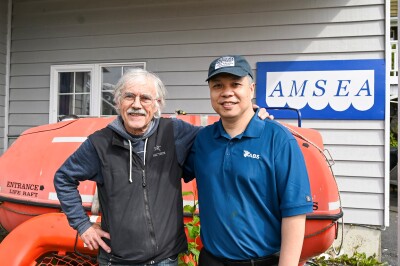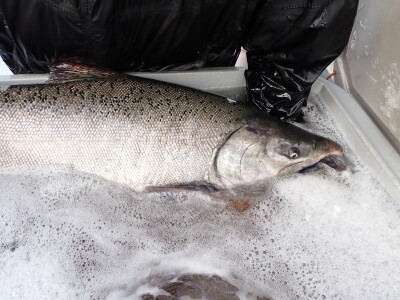Risk management reduces hazards
From U.S. Coast Guard reports
In August, the U.S. Department of Labor's Bureau of Labor Statistics released a preliminary report, "National Census of Fatal Occupational Injuries in 2006," that shows fishing and related jobs resulted in the highest fatality rate, with a death rate of 141.7 per 100,000 employed. This rate is almost 75 percent higher than for pilots, flight engineers and loggers, the next most hazardous occupations in 2006.
The Coast Guard has evaluated data on the causes of fatalities aboard commercial fishing vessels. Over the past 12 years, more than half of the fatalities resulted when the vessel was lost after flooding, sinking or capsizing. Falls overboard were the second leading cause of death while working on a fishing vessel.
Any number of tasks performed or activities conducted on fishing vessels pose a risk for injury or death to fishermen. Risk management — the awareness of what is going on around you and taking precautions to protect yourself and others on board — is especially important when carrying out routines.
Because risk-taking and risk acceptance have been identified as contributing to the high injury and fatality rates in commercial fishing, it is critical for the industry to address and modify the culture of risk. Risk management empowers employees to accomplish a task in a systematic and safe way. This can be met by creating plans, methods and tools to approach work through a predetermined set of risk evaluations.
A 43-foot fiberglass shrimp boat was operating during January in Apalachicola Bay, Fla. The vessel had been experiencing some electrical problems and the captain was planning to troubleshoot them as soon as he had a chance. One of the problems had to do with the deck lighting. That evening, the captain climbed into the rigging to check the lights. While working on a light, he apparently came into contact with a hot wire and was electrocuted.
The deckhand found the captain hanging in the rigging and began calling for help on VHF channel 80. Another shrimp vessel nearby responded to the calls for help. The captain and deckhand of the good Samaritan vessel got the skipper down from the rigging and tried to revive him, without success. They called for help from local authorities.
A Florida Fish and Wildlife Conservation Commission vessel responded and retrieved the body for transport to the sheriff and coroner ashore. The coroner determined the cause of death to be low-voltage electrocution. The initial injury to the captain and subsequent death may have been aggravated by previous medical conditions.
Lessons learned
This incident is an example of why safety procedures and precautions, risk management, should be followed to avoid injury or death.
The captain was not wearing any kind of insulating gloves, and the electrical circuit to the lights on which he was working was not secured. This is a case of poor risk management.
Accepted safety procedures and precautions when working on an electrical system are to have the particular system or circuit de-energized, locked out and tagged out. This will prevent a person from coming into contact with a live wire, and should alert anyone else from switching on or activating the system or circuit without checking into the reason it is secured. Also, the proper personal protective equipment should be worn.
These procedures and precautions should be exercised when working on any other type of equipment or system that, if energized or activated, could cause harm to an individual working on or around it. This applies when conducting maintenance or making repairs to fuels lines, motors, blowers, fans, power take-offs, winches, processing equipment and pumps, among others.
Accidents will happen, but being aware of activities around you reduces the risk of injury or death. Your safety depends on your vigilance. Know the proper and accepted safety precautions and procedures for the task at hand.
Visit our Web site at www.fishsafe.info for information on casualties, safety equipment and requirements, getting a dockside safety examination for your vessel, and other references and links, including information on risk management.






